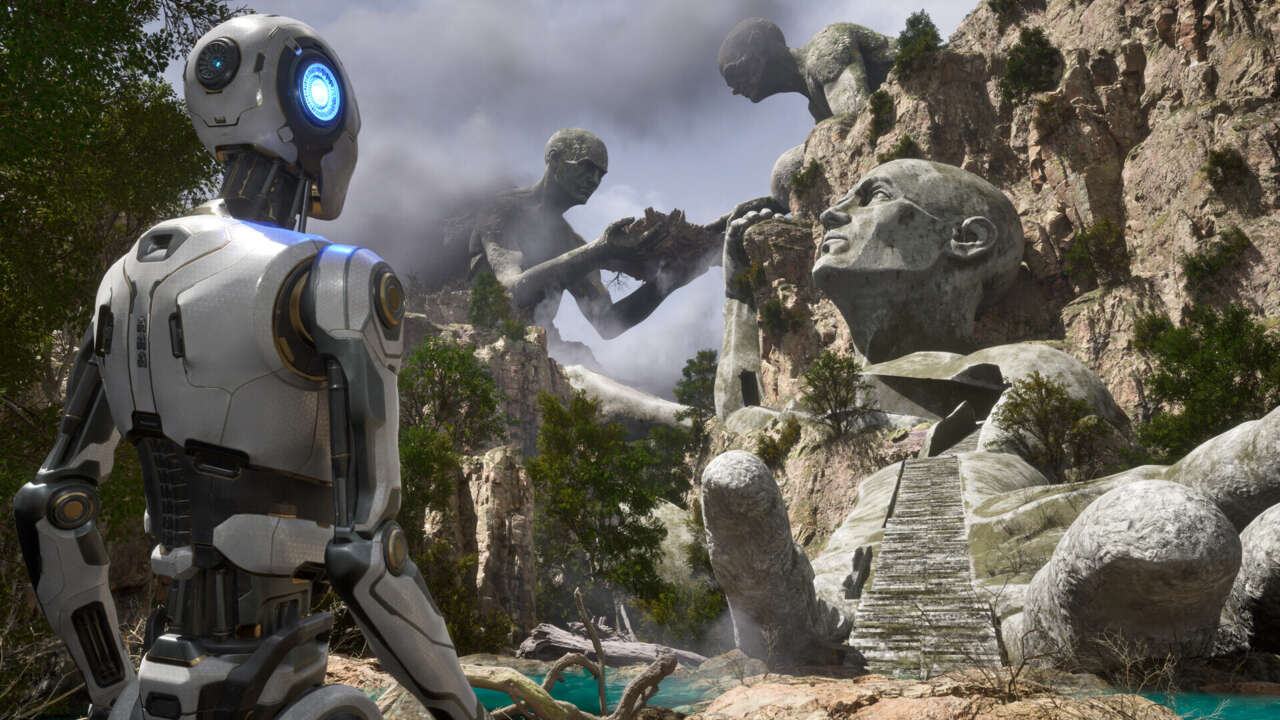Video games often deal with the end of the world and thinking about how cool it might be. Like, sure, it sucks that most everyone has to die horribly for the end of the world to take place, but those of us who survive might get to shoot evil marauders or rotting mutants or giant bugs. Or maybe there are evil marauders, rotting mutants, and giant bugs who are trying to bring about the end of the world, and you can shoot them to prevent it. In any event, the idea of finding fun settings that let you dispense death without really worrying about the consequences tends to bring something of a positive spin to the apocalypse.
The Talos Principle 2 isn’t just about the possibility of the end of the world, but the real, legitimate, logical fear of it–one based not on religious abstraction or a distant extrapolation, but an understanding of past mistakes. It doesn’t use that possibility for a fun setting with monsters to blast or a villain to chase and instead leans into a more peaceful and serene conception of impending doom. How best to prevent bringing an end of our own making to the world, it asks, even if it’s currently theoretical or decades in the future? When is it worth the risk? What values, what comforts, what aspects of ourselves are important to us, and which of them do we consider so intrinsic that to exist without them would be no existence at all?
It’s also a game about puzzles. The puzzles are really good.
It’s puzzles all the way down, in fact. At the lowest level, these are a series of self-contained rooms in which you’re trying to reach a goal that is out of reach, whether up on a ledge or blocked by a grate or forcefield. To get there, you need to do things like activate pressure plates or connect colored laser beams to corresponding switches by walking around in first person, picking up and thoughtfully placing tools, such as weighted cubes or prisms, on tripods.
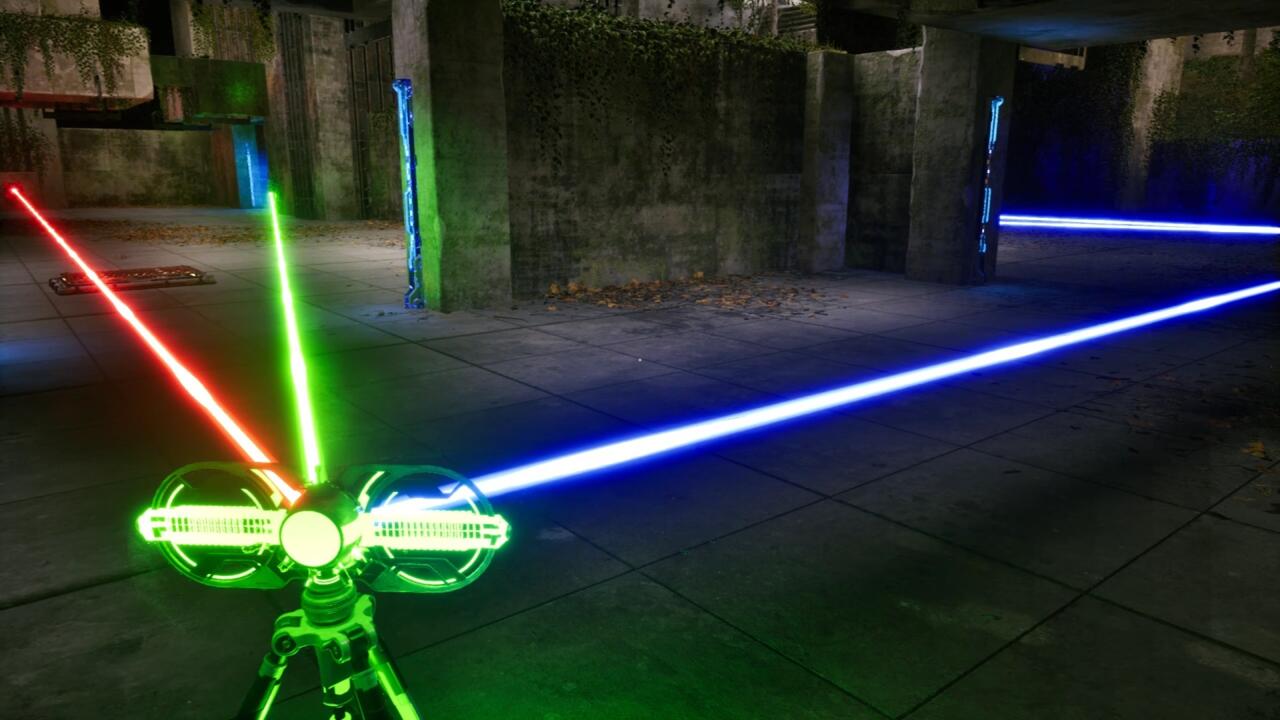
It’s a testament to some really incredible puzzle design that The Talos Principle 2 will put you through nearly 100 of these rooms and they never become boring and rarely are frustrating. Talos 2 continually adds, removes, and remixes elements, providing new tools like an antigravity gun for zipping objects through the air or a teleporter for zapping yourself through fences, and these changes always lead to fun new adventures in lateral thinking.
Puzzles consistently provide you with those excellent moments of epiphany, when you get an idea or try something new or suddenly see the solution, and you get to feel brilliant for five seconds. And then it’s off to the next challenge, over and over again, and whether easier or tougher, every single one feels carefully and intelligently designed never to be annoying or feel cheap. The solution is always just out of view, waiting for you to adjust your perception of the challenge ever so slightly in order to discover it.
One level above the puzzle rooms themselves are the islands on which you find them and the vast mystery they represent. See, The Talos Principle 2 has already seen an end of the world. It’s set in the far future, after humanity has destroyed itself through foreseeable but unheeded climate-change disasters. You’re a member of the new humanity, a group of artificially intelligent robots created by the last vestiges of the biological human race.
You’re the 1,000th robotic human, and your birth marks the fulfillment of the Goal, a plan to stop the expansion of this civilization and its city, New Jerusalem, so that it doesn’t risk the destruction visited upon its progenitors. But then you discover a group of islands marked by incredible vistas and enormous structures, created by unknown hands through impossible means. You’re called by the existence of these structures, and divining their purpose, their construction, and their creators becomes a huge, sweeping puzzle unto itself that you’ll spend better than 30 hours trying to solve. There’s an intention here, like these things were made for your people to discover, and that makes each puzzle solved a step toward understanding the looming and tantalizing question of why.
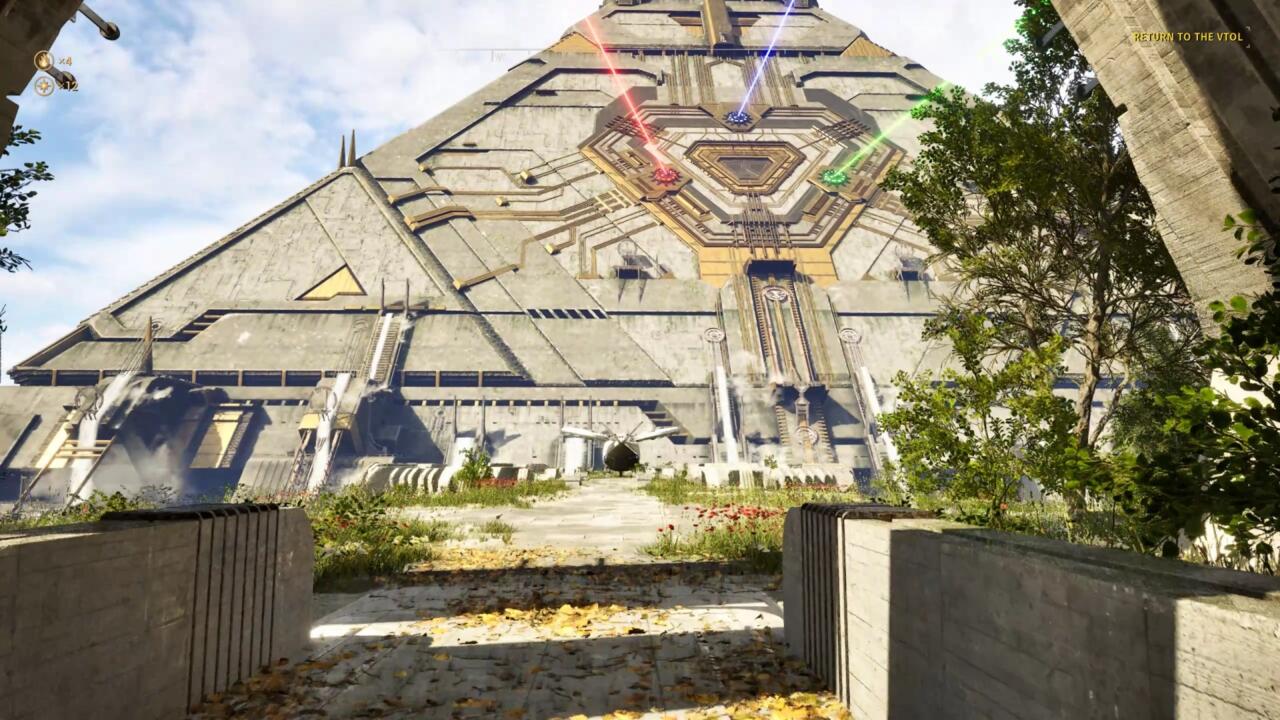
The structures on the island are a marvel to your small expedition. Some defy the laws of physics, while others suggest a power and technology vastly outpacing this young new humanity. They’re all beautiful and awe-inspiring in their scale and grandeur, and though there are 13 total islands, there wasn’t one that I didn’t stop and take in for a few moments the first time I arrived.
The islands aren’t populated by anything but animals, but things are made ever stranger as you discover and interact with mythological figures rendered seemingly as holograms: Prometheus, the Titan who stole fire from the gods and gifted it to humanity; Pandora, whose curiosity released all the evils into the world; and the Sphinx, who presents you with riddles as enigmatic as the islands and their structures. Prometheus pushes you to solve the puzzles and unlock the structures to which they’re connected, while Pandora consistently warns you away, and the Sphinx sits between the two. Their goals and purposes, and even the nature of what they are, just add to the intrigue, and Talos 2 slowly lays out information and answers at just the right pace to keep you constantly delving deeper.
The most captivating puzzle, though, is the one you find in yourself and your fellow humans, the one that doesn’t have a straight answer.
The Talos Principle 2 vastly expands on its predecessor with the inclusion of a huge number of characters, from the members of your expedition to the residents, scholars, workers, zealots, and politicians of New Jerusalem. Each is a well-rounded, ahem, fleshed-out individual, with their own values, morality, hopes, and fears. The best parts of Talos 2 are how much you get to hear from each of them, the dimensions they bring to the mystery with their perspectives, and how often they can pose arguments you might completely disagree with that are still totally compelling.
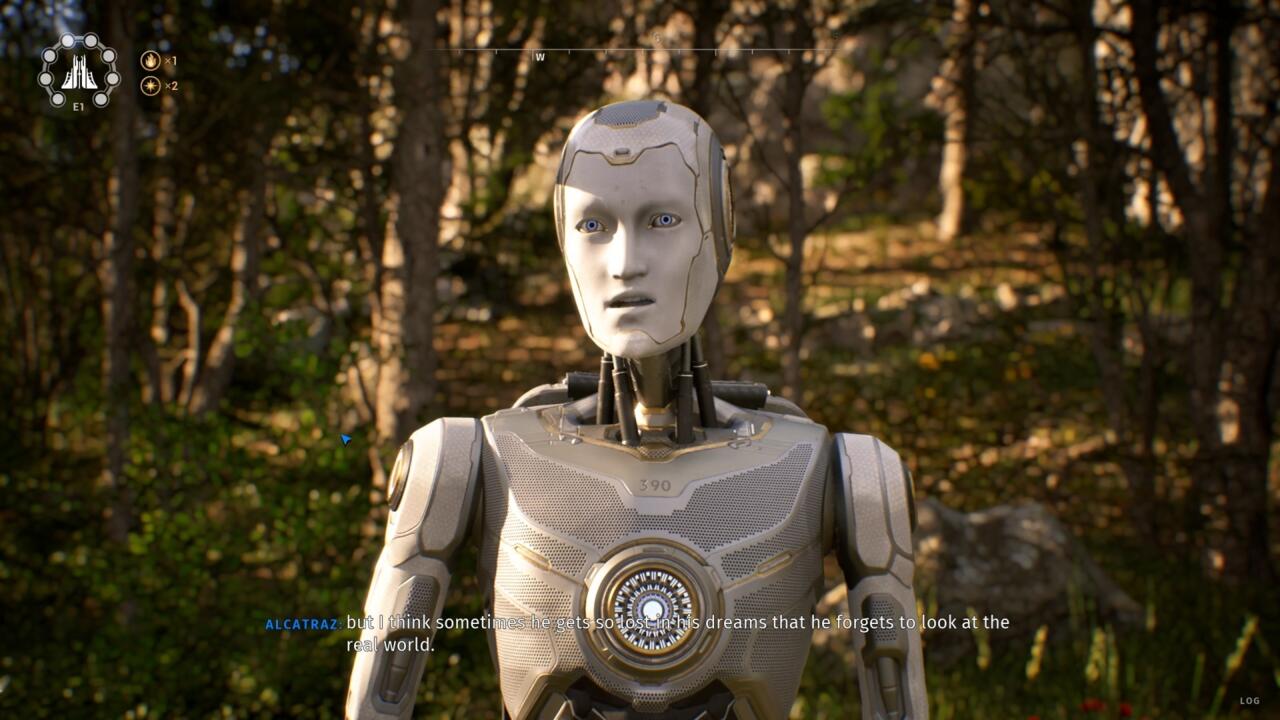
The existence of the structures is earthshaking for the humans’ small civilization. With so few people, New Jerusalem struggles to meet energy needs and complete construction projects. Some residents feel that caution is in order, that balance must be maintained and nature respected, and the ruins of former human cities on the horizon are a testament to the prudence of that position. Others struggle with listlessness, worrying that civilization is stagnating and suffering a slow death rather than a fast one. Some have adopted a religious fervor about the Goal and the founders of New Jerusalem, while others have little reverence for their warnings or wisdom.
Exploring the islands with your small expedition brings all these views and more into the story. They’re expanded on by social media posts that give you a look at what’s going on back home, and by files and notes and discussions on differing viewpoints and philosophy you can uncover on island terminals. The impact of your conversation choices adds up, so much that the plot will shake out in significantly different ways depending on the views you share and who you share them with, down to a couple of different endings.
And it, in turn, can change you, the player. The Talos Principle 2 is a puzzle game that’s really about asking yourself what you believe and what’s important to you. Where Talos 1 wanted you to think about the things that make you a person and an individual, Talos 2 is about what it means to be a member of a civilization and a society. But all those deep questions are elevated beyond boring academics because of the characters–because the game is populated with so many people whose perspectives make sense, whose doubts are valid, whose intentions are just as good as yours, and who genuinely worry about what future they might create, both on purpose or by accident.
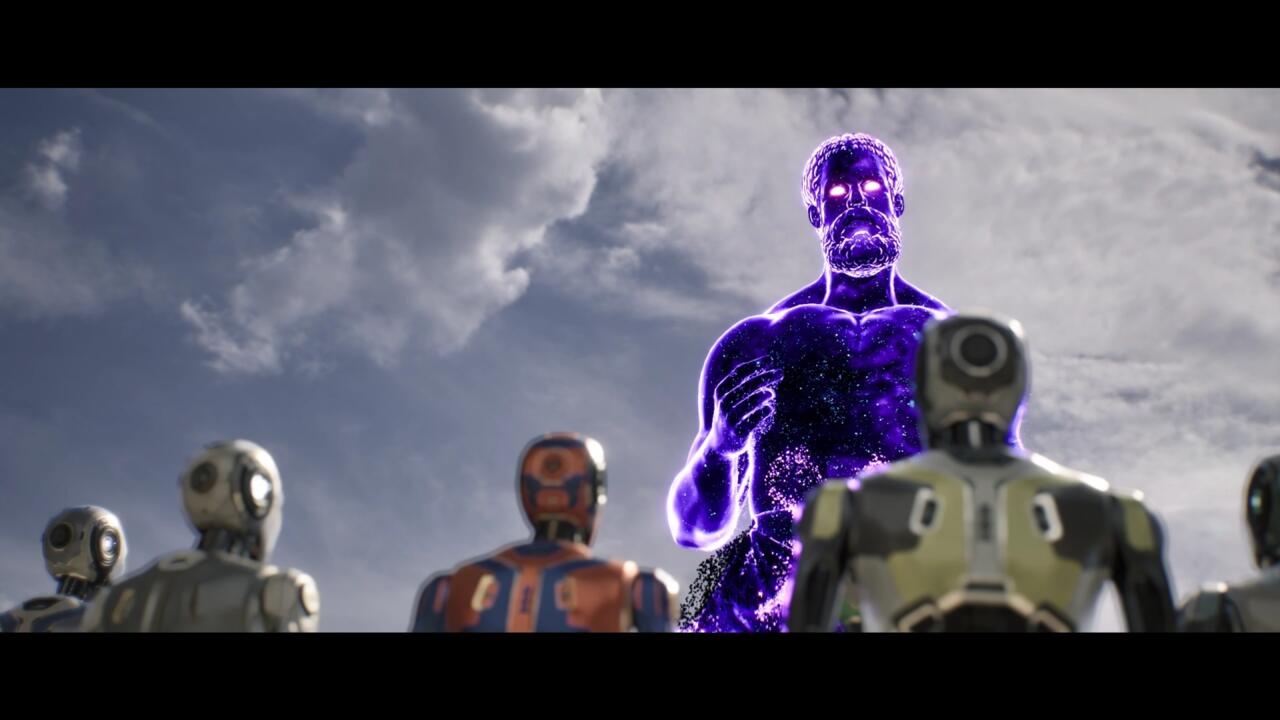
There are only a few technical issues that hold The Talos Principle 2 back, and they’re mostly of the minor visual variety, like texture pop-in. One, however, severed my immersion significantly, when I returned to some of the islands late in the game to mop up a few puzzles and characters who should have departed were still present and sometimes even still available for conversations. One person had left the expedition before my return but was still there and even commented on new revelations as they came up. For a game that does so well making choices and characters integral to the experience, it was a flub that weakened Talos 2’s closing moments.
Still, it all comes together in a peaceful, beautiful, often brilliant game that expands and expounds on everything that made the original Talos great. Your presence as a part of New Jerusalem will change it in ways large and small, but the question of whether that change will be good hangs over everything. You’re constantly making choices in Talos 2, but they’re never so heavy-handed as whether to save someone or kill them. They’re smaller, more fascinating, and more contemplative conundrums. Is safety more important than freedom, and really, what’s the difference? Does humanity hold dominion over the Earth, or stewardship, and how should that change how we act? What do we owe to one another, and what does society owe to us? What is life about–and what should it be about?
Lots of games are about the possible end of the world, but I can’t remember playing one that thought about that end, or made me think about it, as much as The Talos Principle 2. As we live through what can often feel like a slow-motion apocalypse, it’s been fascinating, heartbreaking, and hopeful to consider things like our essential humanity, the things that make us who we are, and the choices we have made and can still make.
And also, the puzzles are really good.
